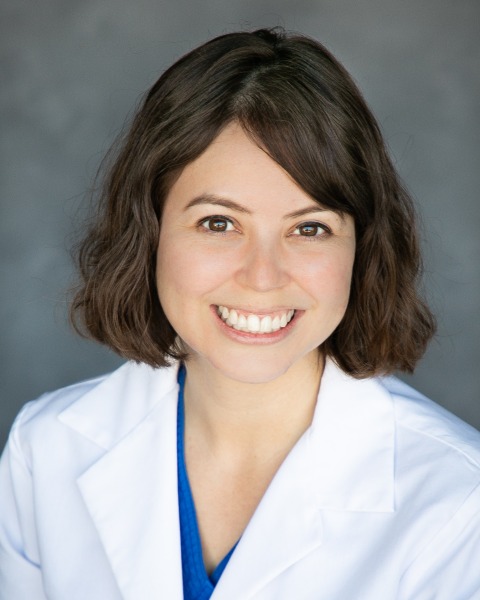Quality Improvement/Patient Safety 4
Session: Quality Improvement/Patient Safety 4
042 - Brushing Up on Oral Health: Improving Topical Fluoride Varnish Application and Access to Dental Care for Patients in an Underserved Pediatric clinic
Friday, April 25, 2025
5:30pm - 7:45pm HST
Publication Number: 42.4113
Lydia Villa, CHOC Children's Hospital of Orange County, Tustin, CA, United States; Mark Colon, CHOC Children's Hospital of Orange County, Orange, CA, United States; kelvin Naito, CHOC Children's Hospital of Orange County, Orange, CA, United States; Viceida Carachure, Children's Hospital, Santa Ana, CA, United States; Irena Tang, CHOC Children's Hospital of Orange County, Anaheim, CA, United States

Lydia Villa, MD (she/her/hers)
Faculty Pediatrician
CHOC Children's Hospital of Orange County
Tustin, California, United States
Presenting Author(s)
Background: Early childhood caries is the most common chronic disease in children. The American Academy of Pediatrics (AAP) recommends fluoride varnish every 3–6 months from tooth emergence until 5 years old. Our community primary care clinics care for a 100% Medicaid population. In 2023, only 20% of patients received topical fluoride varnish, despite families often reporting regular dental visits. This project aimed to improve varnish application rates and reduce barriers to accessing dental care for our underserved pediatric population.
Objective: Our primary aim was to improve fluoride varnish application by 50% for all patients 1-21 years old at one clinic by end of October 2024. Our secondary aims became to evaluate what percentage of patients had a dental home, understand families’ beliefs about preventative dental care and barriers to care.
Design/Methods: This was a quality improvement project completed over 10 months. A driver diagram was utilized to identify drivers and changes. Using a Plan-Do-Study-Act (PDSA) methodology, we identified interventions targeting provider knowledge, patient knowledge and values, data collection and billing. The first cycle assessed resident physician knowledge and provided education. The second cycle provided clinic team training and educational flyers to families. We surveyed families regarding their beliefs and barriers to dental care. We also reviewed our process for placing orders, billing and the use of associated ICD-10 and CPT codes.
Results: A 7-fold increase in varnish application was documented after conjunct staff training and patient education was enacted. Coinciding with seasonal variation in clinic attendance, a waning of orders was observed after the first two months, but levels remained 4-fold higher than prior to interventions. Nearly all patients endorsed the belief that preventative dental care was important , however 24% of patients did not think fluoride varnish was a good idea. Only about 7% of our patients reported a barrier to dental care, which was consistent with reported dental attendance. The most reported barriers were transportation and being unaware of the need to see a dentist every 6 months.
Conclusion(s): Providing clinic team and patient education on fluoride varnish application led to a significant increase in application rates among children aged 1-21 years in a primary care clinic. This aligned with AAP’s recommendations and contributed to meeting Healthcare Effectiveness Data and Information Set (HEDIS) measures. This project led to collaboration with our county’s primary server of Medi-Cal. Future projects will focus on clinic process.
Total Topical Fluoride Varnish Orders by Month in 2024
.png) A Run chart demonstrating the total topical fluoride varnish orders by month in 2024 at Clinica Para Ninos
A Run chart demonstrating the total topical fluoride varnish orders by month in 2024 at Clinica Para NinosBarriers to Dental Care
.png) A Pareto chart demonstrating the results of our patient survey. A total of 245 surveys were completed, when 491 total patients were seen in clinic over a 2 week period, for a response rate of 50%. 7% of patients reported a barrier to dental care. 34 barriers were endorses, with some patients reporting more than 1 barrier.
A Pareto chart demonstrating the results of our patient survey. A total of 245 surveys were completed, when 491 total patients were seen in clinic over a 2 week period, for a response rate of 50%. 7% of patients reported a barrier to dental care. 34 barriers were endorses, with some patients reporting more than 1 barrier. Total Topical Fluoride Varnish Orders by Month in 2024
.png) A Run chart demonstrating the total topical fluoride varnish orders by month in 2024 at Clinica Para Ninos
A Run chart demonstrating the total topical fluoride varnish orders by month in 2024 at Clinica Para NinosBarriers to Dental Care
.png) A Pareto chart demonstrating the results of our patient survey. A total of 245 surveys were completed, when 491 total patients were seen in clinic over a 2 week period, for a response rate of 50%. 7% of patients reported a barrier to dental care. 34 barriers were endorses, with some patients reporting more than 1 barrier.
A Pareto chart demonstrating the results of our patient survey. A total of 245 surveys were completed, when 491 total patients were seen in clinic over a 2 week period, for a response rate of 50%. 7% of patients reported a barrier to dental care. 34 barriers were endorses, with some patients reporting more than 1 barrier. 

